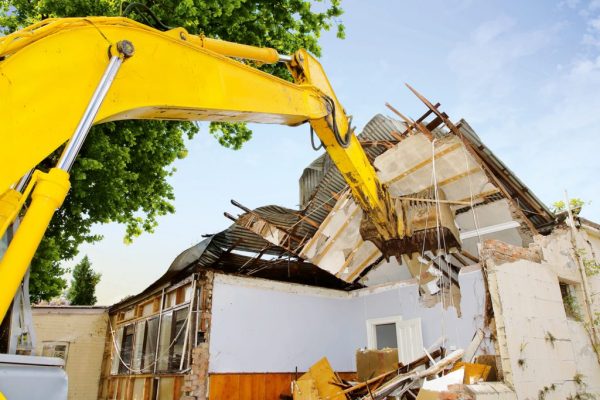Sustainable demolition in the construction industry is an increasingly important practice aimed at dismantling structures in an environmentally friendly way that maximizes the reuse and recycling of materials.
Also known as deconstruction or green demolition, sustainable demolition not only mitigates the environmental impact of construction and demolition activities but also contributes to a circular economy by keeping materials in use for as long as possible.
It represents a critical step towards achieving sustainability in the built environment.
Sustainable demolition prioritizes the recovery of materials such as wood, metals, bricks, and concrete. These materials can be reused in new construction projects or repurposed, significantly reducing the volume of waste that ends up in landfills.
By reusing and recycling materials, sustainable demolition decreases the demand for new raw materials. This conserves natural resources like timber, minerals, and fossil fuels, which are often required to produce new construction materials.
While there are challenges to its widespread adoption, the long-term environmental and economic benefits make it a critical component of sustainable development in the construction industry.
Before undertaking a demolition exercise it is advisable to choose your contractor wisely.
sustainable demolition techniques
- Deconstruction: This method involves carefully dismantling a building piece by piece to salvage and reuse materials. This minimizes waste and conserves resources by allowing materials to be repurposed for other projects.
- Selective Demolition: This approach targets specific sections of a building for removal while leaving the main structure intact. It is ideal for renovations that aim to preserve parts of the existing building, thus reducing the need for new materials and minimizing waste.
- Green Demolition: This technique incorporates eco-friendly practices to reduce the environmental impact of demolition. It involves recycling materials, using non-toxic substances, and ensuring minimal disruption to the local environment.
Before beginning demolition, create a comprehensive waste management plan to identify which materials can be salvaged, recycled, or need to be disposed of. This plan should include:
Material Assessment: Determine the types of materials present and their potential for reuse or recycling.
Consultation with Recycling Centers: Engage with local recycling facilities to understand the options for material disposal, especially for hazardous substances.
Utilize Energy-Efficient Equipment: Implementing tools and machinery that are energy-efficient, such as electric saws and drills, can significantly reduce the environmental footprint of the demolition process.
Dust Suppression: Employ dust control measures to minimize air pollution. This protects both workers and the surrounding community from potential respiratory issues.
Water Conservation: Limit water usage during demolition and explore alternative methods to reduce water consumption.
Alternative Fuels for Transportation: Use vehicles powered by alternative fuels (e.g., biodiesel, electric) for transporting materials and equipment to further reduce carbon emissions.
Safety measures for sustainable demolition
When it comes to demolition projects, it’s important to observe safety measures. Conduct thorough inspections to identify hazardous materials like asbestos, lead, and mold. Hiring certified professionals to handle and remove these substances ensures safety and compliance with regulations.
During demolition, workers should wear appropriate protective gear and ensure proper ventilation to mitigate the risk of inhaling toxic materials. After the demolition, reassess the site for any residual hazardous materials. Proper disposal in accordance with local regulations is crucial to prevent environmental contamination.
Additionally, open communication with the local community before starting a demolition project helps address concerns and foster trust.
Informing residents about the project timeline and potential impacts can ease the transition. Provide alternative housing or temporary relocation options for residents who might be affected by the demolition.
Gradual relocation plans can help minimize disruption. Ensure that affected residents receive fair compensation for relocation costs and any other expenses incurred due to the demolition.
The community can also be educated on to sustainable demolition practices through awareness and support for environmental sustainability initiatives.
In conclusion, responsible demolition practices are paramount in achieving sustainable construction outcomes.
By adopting these comprehensive approaches, we can minimize environmental impact and promote a more sustainable construction industry. Together, we can build a construction industry that prioritizes environmental stewardship and sustainable development.
Also Read
Step by step guide to effective demolition
How to launch your real estate career

